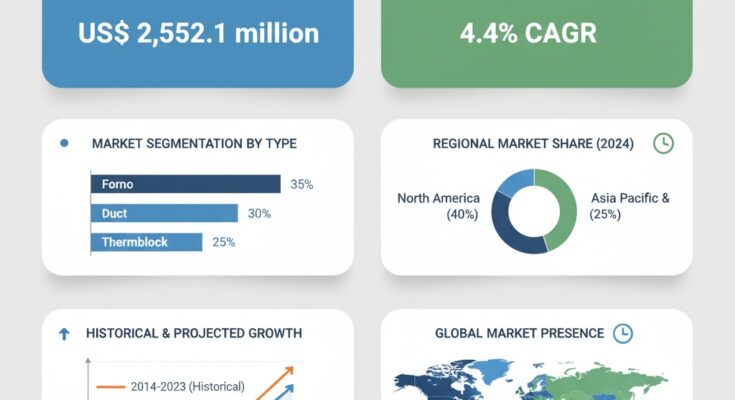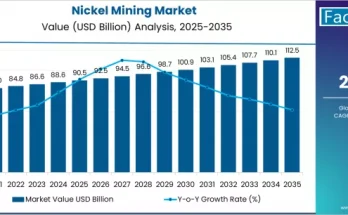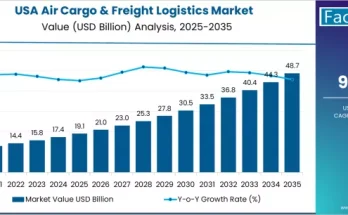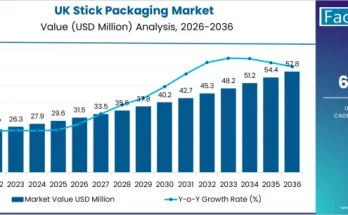The global high power industrial burner market is poised for consistent growth, fueled by rising industrialization, advancements in combustion technologies, and an increasing focus on energy-efficient heating solutions. According to a recent study by Fact.MR, the market is estimated to be valued at US$ 1,659.2 million in 2024 and is projected to reach US$ 2,552.1 million by 2034, reflecting a CAGR of 4.4% during the forecast period.
As industries intensify efforts toward emission control and fuel efficiency, high power industrial burners are becoming indispensable for process heating across sectors such as petrochemicals, metallurgy, power generation, and food processing.
Strategic Market Drivers
- Growing Demand for Energy-Efficient Industrial Heating Systems
The transition toward low-emission and fuel-optimized combustion systems is accelerating the adoption of high power industrial burners. Modern burners equipped with intelligent control systems enable real-time monitoring, precise flame modulation, and reduced NOx emissions—addressing both cost and sustainability concerns.
Industries such as cement, glass, and metal processing are increasingly investing in advanced burner systems to improve production efficiency while meeting stringent environmental standards.
- Rapid Industrialization and Expansion of Process Industries
Emerging economies in Asia and the Middle East are witnessing a surge in industrial infrastructure, boosting demand for high-capacity burners. These burners play a pivotal role in maintaining stable heat supply and operational reliability in heavy industries.
Additionally, the adoption of dual-fuel and hybrid burners that support cleaner fuels like natural gas and hydrogen is gaining traction, aligning with global decarbonization initiatives.
- Technological Advancements in Combustion and Control Systems
Integration of digital combustion management systems, IoT-based monitoring, and predictive maintenance solutions is transforming industrial heating operations. These innovations enhance fuel flexibility, minimize downtime, and improve safety, driving the modernization of legacy thermal systems.
Regional Growth Highlights
East Asia: Industrial Powerhouse and Manufacturing Hub
East Asia dominates global market demand, led by China, Japan, and South Korea, where rapid industrial expansion and manufacturing advancements are fostering growth. Government initiatives supporting cleaner fuel technologies and process automation further accelerate burner adoption in the region.
Europe: Focus on Sustainability and Emission Reduction
Europe’s high power burner market is driven by strict energy efficiency and environmental regulations. Countries like Germany, Italy, and the U.K. are leading in the implementation of low-NOx burners and renewable-compatible combustion systems, supported by industrial decarbonization policies.
North America: Innovation and Retrofitting Boom
In the U.S. and Canada, market expansion is bolstered by industrial modernization programs, retrofitting of legacy combustion equipment, and the integration of advanced burner management systems to ensure operational efficiency and regulatory compliance.
Emerging Markets: Infrastructure and Industrial Growth Catalyst
Regions such as Latin America, the Middle East, and South Asia are exhibiting increasing adoption of high power burners due to expanding cement, steel, and energy industries. Infrastructure development and favorable government policies are further contributing to market growth.
Market Segmentation Insights
By Burner Type
- Gas Burners
- Oil Burners
- Dual-Fuel Burners
By Application
- Power Generation
- Petrochemical Processing
- Metal & Steel Industry
- Food & Beverage Industry
- Cement & Glass Manufacturing
- Others
By Power Rating
- Up to 10 MW
- 10–50 MW
- Above 50 MW
Challenges and Market Considerations
Despite favorable growth, the market faces several challenges:
- High Installation and Maintenance Costs: Advanced burner systems require significant upfront investment and skilled labor for maintenance.
- Fluctuations in Fuel Prices: Variations in natural gas and oil prices impact operational costs.
- Stringent Emission Regulations: Compliance with evolving environmental standards demands continuous innovation and product adaptation.
- Supply Chain Disruptions: Raw material shortages and geopolitical instability can delay equipment delivery and installations.
Competitive Landscape
The global market is characterized by intense competition and technological innovation, with key players focusing on product diversification, fuel flexibility, and smart combustion control systems.
Key Companies Profiled:
- Alfa Laval AB
- Baltur S.p.A.
- Andritz AG
- SAACKE GmbH
- Tenova S.p.A.
- Weishaupt Group
- ZEECO Inc.
- John Zink Hamworthy Combustion
- Astec Industries, Inc.
- Babcock Wanson
- Thyssenkrupp
- Honeywell International Inc.
- Oilon Group Oy
- ELCO Burners
- Forbes Marshall Private Limited
- Enervise, Inc.
- Volcano Co., Ltd.
Notable Development
- 2021 – Baltur S.p.A. introduced new dual-block burners under its TBR series, designed for use in large thermal units and installation on water-tube heat generators. These burners enhance thermal efficiency and operational flexibility for high-temperature industrial applications.
Future Outlook: Toward Cleaner and Smarter Combustion
The next decade will mark a shift toward digitally optimized, low-emission industrial burners. Manufacturers are investing in hydrogen-compatible designs, AI-driven combustion control, and modular high-capacity systems to support the energy transition.
With robust demand from core industrial sectors and the global emphasis on carbon reduction, the high power industrial burner market is set for sustained growth. Companies that focus on innovation, sustainability, and energy efficiency will lead the transformation toward a smarter, cleaner industrial heating future.



